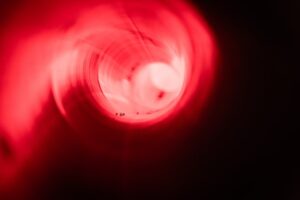
Michigan (USA) Researchers at Michigan State University in the USA have tricked grasshoppers into sniffing out cancer cells. To do this, they implanted electrodes in the brain lobes of the insects. They receive signals from the grasshoppers antennae, since these insects perceive smells with their antennae.
For this purpose, the scientists cultivated three different types of oral cancer cells as well as healthy oral cells. The cells emit gases that have been trapped. In the second step, these gases were directed to the grasshoppers feelers.
The grasshoppers reacted differently to each cell type. The researchers were able to use the reactions to determine exactly which cell it was. As a result, they could see directly whether the cells were affected by the cancer. Currently, 40 neurons are needed for the signal to be clear enough – that’s six to ten grasshopper brains.
The university team chose the grasshoppers because the insects had been extensively researched in recent years. According to Debajit Saha, a neural engineer involved in the work, this is the first time a living insect brain has been used to detect cancer.
The emphasis is on living brains: the rest of the insect was already dead at the time of the experiment. According to Saha, grasshoppers cannot feel pain. However, there is other research that indicates that insects can find something painful.
Research at Michigan State University has not yet been peer-reviewed. The researchers led by Saha hope to use their findings to develop an insect-based breath test that can be used to detect cancer cells.
The idea of using animals to detect diseases has already worked elsewhere: dogs and bees were trained to sniff out the virus during the corona pandemic. Animals seem to be able to smell the chemicals produced by human metabolism. If we are sick, the smell changes accordingly.
In the future, Saha hopes to only need one locust brain and not up to ten for a clear signal. The scientists also want to develop a wearable device containing the brain and feelers so that the system can also be used outside of the laboratory.






